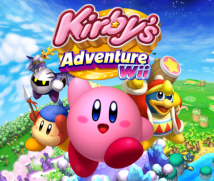4. A Team Awakening Maternal Instincts
Hattori-san, how much had you played the Kirby series before?
I had played the first Kirby’s Dream Land 13, Kirby’s Adventure, and Kirby Super Star Ultra. Those are the three in the main series that I had played. 13Kirby’s Dream Land: An action game released for the Game Boy system in April 1992 in Japan. The first game in the series.
When you came to work on this project, what did you think was the essence of Kirby?
It’s difficult to say. I listened to a lot of people, but everybody says something different.
I know. They’re as different as they are for The Legend of Zelda and Super Mario Bros. But everyone thinks their idea of the essence of Kirby is the right one! (laughs)
They feel rather strongly about it.
I feel like Kirby contains a lot. After all, he can inhale just about anything, so anything fits! (laughs)
I agree! His appearance and abilities are ever-changing, which should be his greatest attribute, but he doesn’t need to transform and can cruise along just fleeing his enemies. That flexibility is a part of Kirby. I think “Anything is possible,” sums up Kirby. I think that whatever we add or subtract, Kirby is Kirby, so I don’t insist on any one particular thing. What each person thinks is probably right, so I think that the essence of Kirby is that which is not determined, but at the same time doesn’t budge.

How about you Kawase-san?
In games like Kirby’s Dream Course 14, Kirby Tilt 'n' Tumble 15 and Kirby Mass Attack 16, Kirby can do anything depending on the game’s materials. So I think the essence of Kirby is the player being able to turn at any time into whatever form he or she wishes. 14Kirby’s Dream Course: An action game released for the Super Famicom system in September 1994 in Japan. 15Kirby’s Tilt ’n’ Tumble: An action game released for Game Boy Color system in August 2000 in Japan. 16Kirby Mass Attack: A group action game released for the Nintendo DS system in August 2011 in Japan.
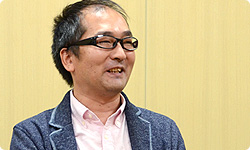
Kumazaki-san?
At first glance, it has mass appeal and casts a broad net, but you can enjoy feverous action. A lot of a Kirby game’s appeal is in its cute and amusing appearance, but the action is surprising, the setting deep and the developments thrilling. I think the essence of Kirby lies in its broad appeal and the way both adults and children can enjoy its depth. When we make a game, we’re careful to ease players in during the first half and suddenly increase the tension in the second half.
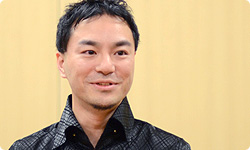
Nakano-san?
This isn’t a very “developerly” way to put it, but for me, Kirby is about super excitement! That was my impression as a child playing Kirby. It surprised you and stimulated your imagination, so you thought “What’s this?!” and “Kirby can do that too?!” As you’re playing, you grow elated. To me, that is the essence of Kirby.
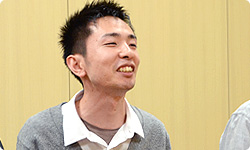
Yes, just like you said, that comment isn’t very “developerly”. (laughs)
(laughs)
What do you think, Kamitake-san?
Like Hattori-san, I think Kirby is about anything being possible. There are easier gameplay elements for small children and plenty of fun elements for hardcore gamers like me.
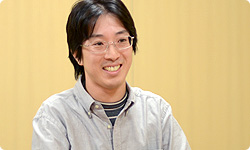
Since people who can play comparatively challenging games can also enjoy reaching the goal rather easily in a Kirby game, there must be an element that allows players the freedom to play a variety of ways at their own skill level.
Yes. There are many ways to clear one map. The developers imagine one particular solution, but we have a good time on the team when someone says, “Did you know there’s this way, too?” Another characteristic is the large variety of Copy Abilities.
How did it look to you, Yamagami-san?
About 15 years ago, I worked on Kirby’s Block Ball 17, but at first HAL Laboratory said it wasn’t like Kirby. In the end, we spent about half a year on a major overhaul. They gave me thorough instruction on every aspect of Kirby’s movement. 17Kirby’s Block Ball: An action game released for the Game Boy system in December 1995 in Japan.
Yes, I remember.
That was when I learned the importance of paying thorough attention to each single movement when working on a popular character. So this time, as I watched it coming together, I thought that, while anything is possible, they were portraying Kirby’s movement precisely, and the balance between that disciplined creativity and high degree of freedom in gameplay is the essence of Kirby.
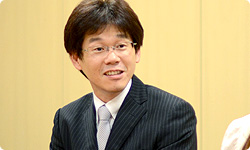
Their love for Kirby truly is deep. Something surprising happened during a meeting once. Kumazaki-san said, “I can’t wait for the weekend.” I thought that was because the work was so hard, but on the contrary, it was because on the weekend he was going to put in specs that he liked.
Huh?! (laughs)
It’s true! Throughout the week, I was mostly supervising and couldn’t work on whatever I wanted.
You were busy each day with your supervisory responsibilities, so you couldn’t think of new game elements.
That’s right. But on weekends, fewer team members were around, so I could make time for myself to think up new specs. The programmer who worked with me on the last boss for Kirby: Power Paintbrush is often at the company over the weekend, and I would say, “Try making something like this,” and he would do it right there before my eyes. Knowing that programmer was there, I would gladly head to work on weekends.
So when the new week began, you must have been surprised.
Well… it had become normal.
Oh, so you weren’t surprised? (laughs)
We were like, “I guess we can put that in, too.” (laughs)
(laughs loudly)
There’d be elements I never remembered making, so I’d ask, “How did you make that?” He was assembling elements from what already existed.
Do you hear what the programming leader and design leader are saying? (laughs)
Ah, well. (laughs) The degree of completion was so high that it allowed for that. One good example is Kirby’s Super Inhale . He doesn’t just inhale big enemies or multiple objects, but also co-players, and then spits them out. That programmer I mentioned suggested that. I thought it was a fairly dangerous idea, but it was already done when he said, “I thought of this, so how about it?”
Oh!
We have a lot of programmers and designers like that. I’d go to the company on the weekend, and bunches of them would be there. We’d throw ourselves into making things and had a great time developing the game. I looked forward to big vacation times like Golden Week and Obon the most, because then I could concentrate on work! (laughs)
They worked like it was a weekend pastime!
Yes, for fun! (laughs)
I’ve worked on a lot of development projects, but this was the first time I had to say, “Please, don’t overwork yourselves!” You could say I was like a mother watching over them.
They awakened your maternal instincts! (laughs)
